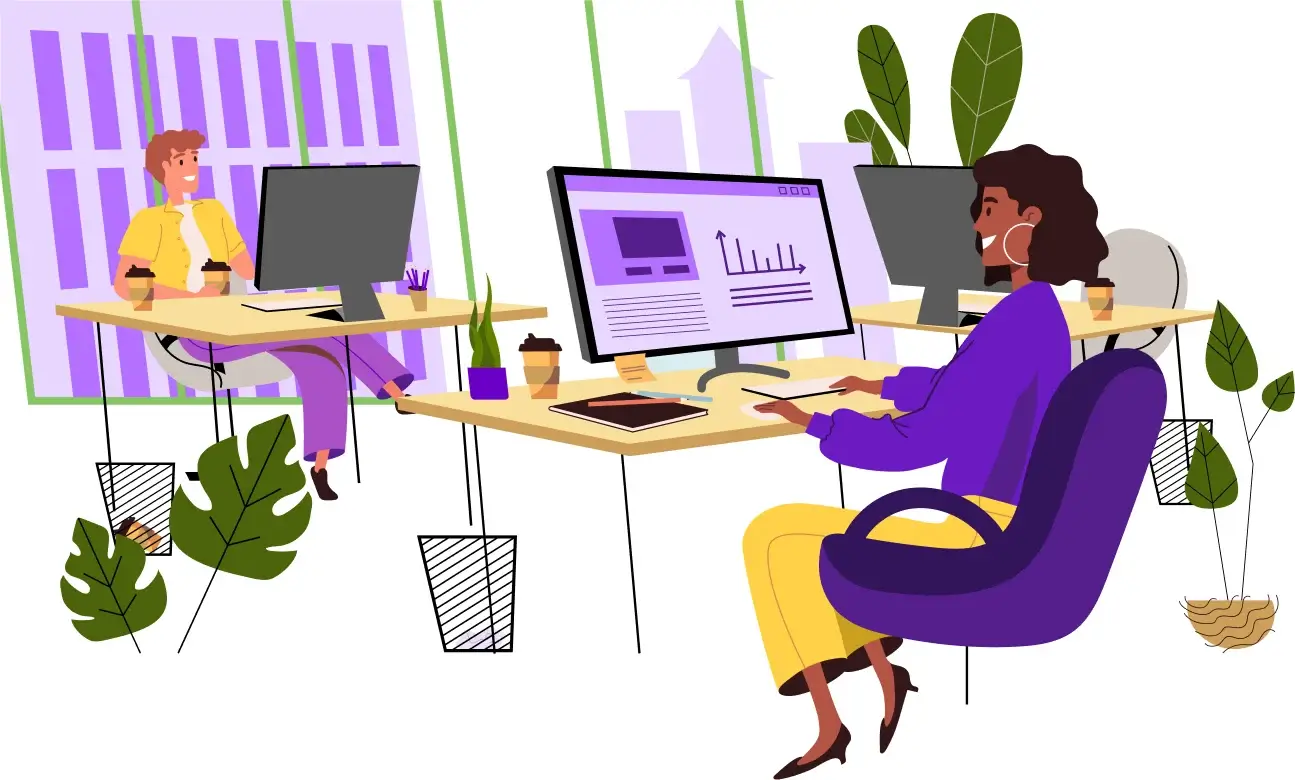
What would the office space and work day need to look like in this new setup?
Guided by our core operating principle of equality, we agreed that the in-person work days should be fixed days (for us, it’s Tuesday and Wednesday), and that everyone who was able should come in on those days. But we knew we needed to offer our employees something that they couldn’t get while working at home.
We felt strongly that the reason team members came in on those days needed to be to do something collaborative, both for their own mental health and the health of the company — and that if the in-person days didn’t look any different than the at-home days, then we as management were doing something wrong. Events like lunch & learns, guest speakers, happy hours, and team outings provide a boost of camaraderie that a Zoom call simply never could.
We knew that the physical environment of the space had to be carefully considered too, because people had adapted to a different baseline while working from home. Most of our calls to other time zones happen in the morning, so we needed to control noise to avoid distractions for other team members. We designed spaces to look more like a living room, with natural light, leather couches, and an abundance of plants. We also added standing desks and ergonomic chairs for everyone, both to promote comfort and to foster collaboration and creativity. We also settled on assigned seating to promote a sense of consistency and help employees develop a rapport with deskmates.
We also considered details like connectivity and conference room availability, because we didn’t want to ask folks to return to the office and then be faced with tech issues or being unable to find a space to meet. We kept our team’s needs top of mind when approaching the return to office, and we hope that the days they spend in-person reflect this attention to detail.
Finally, we asked ourselves, What are we willing to be flexible over, and are we willing to keep revisiting this process?
Though we felt strongly that everyone who was able to should come in for the in-person days, there will of course always be extenuating circumstances to handle on a case-by-case basis. But we also needed to decide if we’d be willing to walk away from talented hiring prospects for whom commuting is a deal breaker. And just as we’d set out to democratize the hybrid work model by asking for input and feedback from our team, we had to ask ourselves: Were we willing to be flexible with how it looks, and even be open to revising how it looks down the line?
Ultimately, this is uncharted territory for us and for so many other organizations. Even though these questions are still being debated (and new ones arise each day!), we at Heady are open to making it an iterative process based on feedback and mutual respect. This is the approach that worked for us, and asking yourself these same questions may prove helpful for your own organization — but ultimately, you’ve got to find your own North Star.
How is your organization approaching the “return to office” debate? Did your own decision-making process align with ours (or radically differ?). We’d love to hear from you. Feel free to reach out at heythere@heady.io and tell us your thoughts.
.png?width=130&height=78&name=Heady_Logo_Web-01%20(1).png)





.png?width=58&name=Ellipse_7-removebg-preview%20(1).png)


